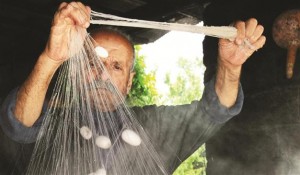Healing is a multistage process not matter what kind it is. Usually we can group the stages into two main phases: triage and recovery. Triage is when we or others stop what is happening from going any further and then start the repair of the damage. Think of a broken leg. Triage would be to stop it from any further breakage or movement, putting the pieces back in place, then securing them and supporting bone reconnection and growth. Recovery is when we start integrating the changes that have occurred to us and use them to fashion a new form of the life we had or an even better one. Once the bone is healed enough to support weight or be used again, we recover by relearning the movements, regaining the trust and use of our muscles/tendons/ligaments/joints and in that rebuilding of strength and ease of movement we rebuild the relationship we have with ourselves again.
I refer to these two phases of healing as breathing out the bad and breathing in the good. Like in the meditation: “Breath in Strength…Breath out Bulls**t…” Unfortunately when people are trying to heal from emotional trauma they seem to focus on or get stuck in breathing out. Most people talk about it as releasing. They release and release and release and somehow this is supposed to fix all the issues. If they could just get it all out then everything would be all right. And yet all they do is feel more and more hollow, less and less themselves, and increasingly frustrated, stuck, and defeated because they are an endless pit. In actuality what they are is someone who has pushed every last ounce of air out of themselves and is somehow waiting for someone else to breath in for them and for the air to magically get in on its own. It’s not their fault, it’s a bit of how things are presented to them. Unfortunately breathing in is necessary, healthy and life sustaining. If we don’t bring in the good then all we are is an empty shell. Well, if we don’t breath in we pass out and either our autonomic systems kick in to keep us alive or we die. But that’s another story for another time.
For trauma, breathing in starts with what has been most damaged and that is trust. Not trust in others, although that’s a thing, but trust in ourselves. Trauma damages our ability to trust – to trust that our bodies are a safe place to be, that our perceptions are real, that our feelings are valid, that our existence has a purpose, that our desires matter…that we matter. That trust can’t be given back to us by someone else although we can be supported in our process to recreate it. It’s a relationship we create within ourselves. We relearn to trust our bodies including their new ability to recognize and react when something is harmful to us. We relearn to trust our emotions because they were never the enemy. We learn to validate our perceptions one at a time including our new and well earned radar that tells us the unsaid, the implied, the manipulative and the underlying motivations. We do this like anyone would create a relationship, one small event or gesture or conversation at a time.
 Trust doesn’t respond to grand gestures, it responds to follow through and commitment. To rebuild trust, to move beyond triage and into recovery, means treating ourselves the way we deserve to be treated. To be encouraging when we try, listen to what we actually want, give rewards not just when we achieve but each time we take a step in the right direction, validate and reward when the answer is no as often as we do when it is yes and come to understand the reasons for both, be gentle when we fail, nurturing no matter what because love and nurturing have no conditions, and above all be patient. Trust is like silk. It doesn’t come into being in a day and can seem thin, delicate and fragile, but it’s strong enough to support oh so much more than you can ever imagine once it’s formed into a thread which creates a cord which can be twisted into a rope…
Trust doesn’t respond to grand gestures, it responds to follow through and commitment. To rebuild trust, to move beyond triage and into recovery, means treating ourselves the way we deserve to be treated. To be encouraging when we try, listen to what we actually want, give rewards not just when we achieve but each time we take a step in the right direction, validate and reward when the answer is no as often as we do when it is yes and come to understand the reasons for both, be gentle when we fail, nurturing no matter what because love and nurturing have no conditions, and above all be patient. Trust is like silk. It doesn’t come into being in a day and can seem thin, delicate and fragile, but it’s strong enough to support oh so much more than you can ever imagine once it’s formed into a thread which creates a cord which can be twisted into a rope…
